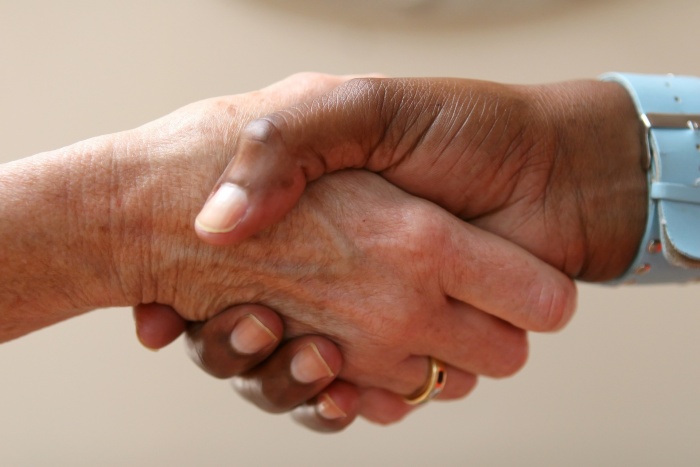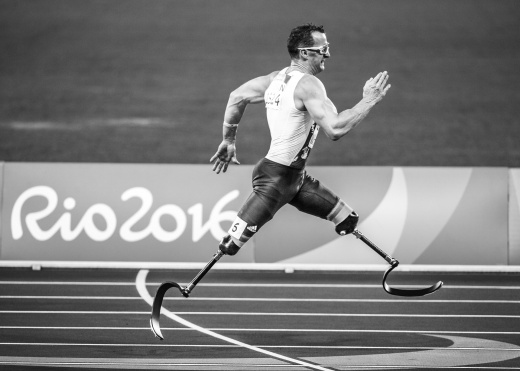Convention on the Rights of Persons with Disabilities
Original Editor - Karen Wilson as part of the Wheelchair Service Provision Content Development Project
Top Contributors - Naomi O'Reilly, Kim Jackson, Karen Wilson, Simisola Ajeyalemi, Olajumoke Ogunleye and Ewa Jaraczewska
Introduction[edit | edit source]
The United National Convention on the Rights of Persons with Disability (UNCRPD) is an international document aimed at protecting the human rights and dignity of persons with a disability (PWD). The convention is written under the paradigm that PWD are not passive recipients of medical treatment and charity, but autonomous individuals with the right to actively participate in society.[1] The treaty differs from other international texts related to disability rights in that, if ratified, it provisions are legally binding.
The UNCRPD was adopted by the United Nations General Assembly in December 2006 and entered into force in May 2008.[2] The Committee on the Rights of Persons with Disabilities is an independent body responsible for monitoring the implementation of the convention by participating members. To date, 177 states have ratified the document. Of these states, 92 also ratified an optional protocol that allows the monitoring committee to investigate complaints related to alleged violations.[2]Convention Structure[edit | edit source]
The convention consists of 50 articles which outline the inherent rights and freedoms of PWD. The structure is as follows:[3]
| Preamble | Article 19: Living Independently and Being Included in the Community |
| Article 1: Purpose | Article 20: Personal Mobility |
| Article 2: Definitions | Article 21: Freedom of Expression and Opinion, and Access to Information |
| Article 3: General Priniciples | Article 22: Respect for Privacy |
| Article 4: General Obligations | Article 23: Respect for Home and the Family |
| Article 5: Equality and Non-Discrimination | Article 24: Education |
| Article 6: Women with Disabilities | Article 25: Health |
| Article 7: Children with Disabilities | Article 26: Habilitation and Rehabilitation |
| Article 8: Awareness-raising | Article 27: Work and Employment |
| Article 9: Accessibility | Article 28: Adequate Standard of Living and Social Protection |
| Article 10: Right to Life | Article 29: Participation in Political and Public Life |
| Article 11: Situations of Risk and Humanitarian Emergencies | Article 30: Participation in Cultural Life, Recreation, Leisure and Sport |
| Article 12: Equal Recognition Before the Law | Article 31: Statistics and Data Collection |
| Article 13: Access to Justice | Article 32: International Cooperation |
| Article 14: Liberty and Security of the Person | Article 33: National Implementation and Monitoring |
| Article 15: Freedom from Torture or Cruel, Inhuman or Degrading Treatment | Article 34 to 40: International Monitoring Mechanism |
| Article 16: Freedom from Exploitation, Violence, and Abuse | Article 41 to 50: Final Clauses |
| Article 17: Protecting the Integrity of the Person | Optional Protocol |
| Article 18: Liberty of Movement and Nationality |
General Principles[edit | edit source]
Taken together, the articles of the UNCRPD are based on 8 General Principles: [3]
- Respect for inherent dignity and individual autonomy
- Non-discrimination, including reasonable accommodation
- Full & effective participation and inclusion in society
- Respect of difference and acceptance of PWD as part of human diversity and humanity
- Equality of opportunity
- Accessibility
- Equality between men and women
- Respect for evolving capacities of children with disabilities and respect for the right of children with disabilities to preserve their identities
These principles are applied across all types of disability and multiple sectors of society.[3]
Rights[edit | edit source]
Below is a list of rights recognized by the convention and the corresponding articles in which they can be found: [1]
- Equality before the law without discrimination (Article 5)
- Right to life, liberty and security of the person (Articles 10 & 14)
- Equal recognition before the law and legal capacity (Article 12)
- Freedom from torture (Article 15)
- Freedom from exploitation, violence and abuse (Article 16)
- Right to respect physical and mental integrity (Article 17)
- Freedom of movement and nationality (Article 18)
- Right to live in the community (Article 19)
- Freedom of expression and opinion (Article 21)
- Respect for privacy (Article 22)
- Respect for home and the family (Article 23)
- Right to education (Article 24)
- Right to health (Article 25)
- Right to work (Article 27)
- Right to adequate standard of living (Article 28)
- Right to participate in political and public life (Article 29)
- Right to participation in cultural life (Article 30)
Implications for Physical Therapy Practice[edit | edit source]
Physical therapists have an integral role to play in implementing and monitoring the provisions of the UNCRPD. In particular, physical therapists can promote the rights and dignity of PWD in the following ways:
- "Facilitating the personal mobility of persons with disability... facilitating access to quality mobility aids, devices, assistive technologies, and forms of live assistance and intermediaries,... (and) training in mobility skills to persons with disabilities and specialist staff working with persons with disability" (Article 20) [3]
- Taking measures to facilitate full inclusion and participation in the community (Article 21)
- Ensuring access to health services without discrimination (Article 25)
- Providing habilitation and rehabilitation services to "enable persons with disabilities to attain and maintain maximum independence, full physical, mental, social and vocational ability, and full inclusion and participation in all aspects of life" (Article 26) [3]
- Promoting adequate standard of living and social protection (Article 28)
- Facilitating participation in cultural life, recreation, leisure and sport (Article 30)
Signatories and Ratifications[edit | edit source]
To date, 177 states have ratified the document. Of these states, 92 also ratified an optional protocol that allows the monitoring committee to investigate complaints related to alleged violations. [2]
To view a map of up to date signatories click here: http://www.un.org/disabilities/documents/maps/enablemap.jpg
Resources[edit | edit source]
To access the United Nations Convention on the Rights of Persons with Disability in it's entirety, click here.
References[edit | edit source]
- ↑ 1.0 1.1 United Nations, Division for Social Policy and Development Disability. The convention in brief. Accessed May 8, 2018: https://www.un.org/development/desa/disabilities/convention-on-the-rights-of-persons-with-disabilities/the-convention-in-brief.html
- ↑ 2.0 2.1 2.2 United Nations, Division for Social Policy and Development Disability. Convention on the Rights of Persons with Disabilities. Accessed May 8, 2018: https://www.un.org/development/desa/disabilities/convention-on-the-rights-of-persons-with-disabilities.html
- ↑ 3.0 3.1 3.2 3.3 3.4 United Nations, Division for Social Policy and Development Disability. Convention on the rights of persons with disabilities and optional protocol. Accessed May 8, 2018: http://www.un.org/disabilities/documents/convention/convoptprot-e.pdf https://www.un.org/development/desa/disabilities/convention-on-the-rights-of-persons-with-disabilities/convention-on-the-rights-of-persons-with-disabilities-2.html








